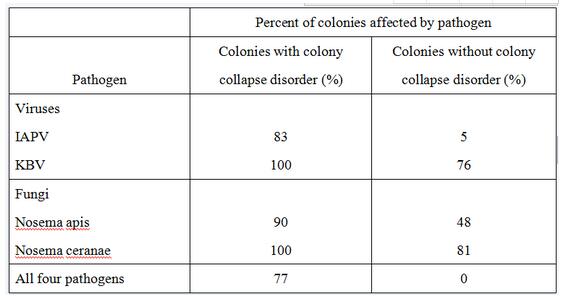选课中心NEW
7099人选课
SAT【0】元讲座
免费学
托福【0】元讲座
免费学
SAT模考网站HOT
39209人预约
托福备考练习HOT
39209人预约
SAT辅导课程NEW
免费报名
AP辅导课程NEW
立即报名
中学生托福课程NEW
立即报名
大学生托福课程NEW
立即报名
【定制】1v1
私人订制
【资料】考前冲刺
精

扫码添加助教
免费领取
备考资料大礼包

扫码关注公众号
新东方在线SAT频道为大家带来SAT词汇题实例讲解一文,希望对大家SAT备考有所帮助。更多精彩尽请关注新东方在线SAT频道!
新SAT OG Test03 阅读 Passage5 Q42
This passage is adapted from Carolyn Gramling, "Source of Mysterious Medieval Eruption Identified." ©2013 by American Association for the Advancement of Science.
1 About 750 years ago, a powerful volcano erupted somewhere on Earth, kicking off a centuries-long cold snap known as the Little Ice Age. Identifying the Line volcano responsible has been tricky.
2 That a powerful volcano erupted somewhere in the world, sometime in the Middle Ages, is written in polar ice cores in the form of layers of sulfate deposits and tiny shards of volcanic glass. These cores suggest that the amount of sulfur the mystery volcano sent into the stratosphere put it firmly among the ranks of the strongest climate-perturbing eruptions of the current geological epoch, the Holocene, a period that stretches from 10,000 years ago to the present. A haze of stratospheric sulfur cools the climate by reflecting solar energy back into Space.
3 In 2012, a team of scientists led by geochemist Gifford Miller strengthened the link between the mystery eruption and the onset of the Little Ice Age by using radiocarbon dating of dead plant material from beneath the ice caps on Baffin Island and Iceland, as well as ice and sediment core data, to determine that the cold summers and ice growth began abruptly between 1275 and 1300 C.E. (and became intensified between 1430 and 1455 C.E.).
4 Such a sudden onset pointed to a huge volcanic eruption injecting sulfur into the stratosphere and starting the cooling. Subsequent, unusually large and frequent eruptions of other volcanoes, as well as sea-ice/ocean feedbacks persisting long after the aerosols have been removed from the atmosphere, may have prolonged the cooling through the 1700s. Volcanologist Franck Lavigne and colleagues now think they've identified the volcano in question: Indonesia's Samalas. One line of evidence, they note, is historical records. According to Babad Lombok, records of the island written on palm leaves in Old Javanese, Samalas erupted catastrophically before the end of the 13th century, devastating surrounding villages—including Lombok's capital at the time, Pamatan—with ash and fast-moving sweeps of hot rock and gas called pyroclastic flows.
5 The researchers then began to reconstruct the formation of the large, 800-meter-deep caldera [a basin-shaped volcanic crater] that now sits atop the volcano. They examined 130 outcrops on the flanks of the volcano, exposing sequences of pumice—ash hardened into rock—and other pyroclastic material. The volume of ash deposited, and the estimated height of the eruption plume (43 kilometers above sea level) put the eruption's magnitude at a minimum of 7 on the volcanic explosivity index (which has a scale of 1 to 8)—making it one of the largest known in the Holocene.
6 The team also performed radiocarbon analyses on carbonized tree trunks and branches buried within the pyroclastic deposits to confirm the date of the eruption; it could not, they concluded, have happened before 1257 C.E., and certainly happened in the 13 th century.
7 It's not a total surprise that an Indonesian volcano might be the source of the eruption, Miller says. "An equatorial eruption is more consistent with the apparent climate impacts." And, he adds, with sulfate appearing in both polar ice caps—Arctic and Antarctic—there is "a strong consensus" that this also supports an equatorial source.
8 Another possible candidate—both in terms of timing and geographical
location—is Ecuador's Quilotoa, estimated to have last erupted between 1147 and
1320 C.E. But when Lavigne's team examined shards of volcanic glass from this
volcano, they found that they didn't match the chemical composition of the glass
found in polar ice cores, whereas the Samalas glass is a much closer match.
That, they suggest, further strengthens the case that Samalas was responsible
for the medieval "year without summer" in 1258 C.E.
As in the highlighted phrase in Paragraph 2 "is written in" most likely to
A . demonstrate the concept of the hands-on nature of the work done by scientists.
B . highlight the fact that scientists often write about their discoveries.
C . underscore the sense of importance that scientists have regarding their work.
D . reinforce the idea that the evidence is there and can be interpreted by scientists.
答案解析:
1.Choice D is the best answer. According to Paragraph 2, "That a powerful volcano erupted somewhere in the world, sometime in the Middle Ages, is written in polar ice cores in the form of layers of sulfate deposits and tiny shards of volcanic glass." The phrase "is written in" reinforces the idea that the polar ice caps contain evidence of the volcanic eruption, and that scientists can interpret this evidence by examining the "sulfate deposits and tiny shards of volcanic glass." Choices A, B, and С are incorrect because the author does not use the phrase "is written in" to demonstrate the concept of the hands-on nature of the scientists' work, highlight the fact that scientists often write about their work, or underscore the sense of importance scientists have about their work.
2.How do the words "can," "may," and "could" in the third paragraph help establish the tone of the paragraph?
A . They create an optimistic tone that makes clear the authors are hopeful about the effects of their research on colony collapse disorder.
B . They create a dubious tone that makes clear the authors do not have confidence in the usefulness of the research described.
C . They create a tentative tone that makes clear the authors suspect but do not know that their hypothesis is correct.
D . They create a critical tone that makes clear the authors are skeptical of claims that pyrethrums are inherent in mono-crops.
答案解析
Choice С is the best answer. When discussing problems with bee colonies, the authors use phrases like "we suspect" ((Paragraph 3)) and "we postulate" ((Paragraph 3)) to show they are hypothesizing reasons for bee colonies' susceptibility to mite infestations. The use of "can," "may," and "could" creates a tentative tone and provides further evidence that the authors believe, but are not certain, that their hypothesis is correct. Choices A, B, and D are incorrect because the authors' use of "can," "may," and "could" does not create an optimistic, dubious, or critical tone.
以上就为大家整理的“SAT词汇题实例讲解”,更多精彩内容,请关注新东方在线SAT频道。
SAT水平能力测试【0元免费测试】

 资料下载
资料下载
【SAT】SAT官方指南题目合集10套
发布时间:2024-04-15添加新东方在线美本助教号
回复【美本资料】获取
SAT阅读+文法+数学专项题型练习册
发布时间:2024-05-31添加新东方在线美本助教号
回复【美本资料】获取
机考SAT-可汗练习题
发布时间:2024-02-29添加新东方在线美本助教号
回复【美本资料】获取
机考SAT-CB官方样题
发布时间:2024-02-29添加新东方在线美本助教号
回复【美本资料】获取
《学科留学百问 (AP-IB-A Level)》
发布时间:2023-02-22添加新东方在线美本助教号
回复【美本资料】获取
2024中国学生留学备考白皮书
发布时间:2023-02-22添加新东方在线美本助教号
回复【美本资料】获取
2023北美考试一本通高中篇
发布时间:2023-02-22添加新东方在线美本助教号
回复【美本资料】获取
新东方SAT阅读讲义
发布时间:2023-02-06添加新东方在线美本助教号
回复【美本资料】获取
2023北美考试一本通高中篇
发布时间:2024-02-29关注美本留学家长帮微信订阅号
回复【美本资料】获取
2024中国学生留学备考白皮书
发布时间:2019-12-19添加新东方在线美本助教号
回复【美本】获取
《学科留学百问 (AP-IB-A Level)》
发布时间:2019-12-19添加新东方在线美本助教号
回复【美本资料】获取
机考SAT-CB官方样题
发布时间:2019-12-19添加新东方在线美本助教号
回复【美本资料】获取
机考SAT-可汗练习题
发布时间:2019-12-19添加新东方在线美本助教号
回复【美本资料】获取
SAT阅读+文法+数学专项题型练习册
发布时间:2019-11-28添加新东方在线美本助教号
回复【美本资料】获取

添加美本助教
即可获取美本资料大礼包

 推荐阅读
推荐阅读
在2024年的QS学科排名中,英国大学再次展现了他们在教育领域的卓越表现。这次排名中,英国大学在16个学科领域取得了世界第一的成绩,为其在全球教育界树立了新的标杆。
来源 : 网络整理 2024-04-23 11:16:49 关键字 : QS学科排名,英国大学qs学科排名
市场营销作为当代商业领域中至关重要的学科之一,一直备受关注。为了帮助读者更好地了解2024年全球市场营销学科的最新发展和排名情况,本文将介绍QS世界大学市场营销学科的排名榜单,并提供相关的官网链接供读者参考。
来源 : 网络整理 2024-04-23 10:21:37 关键字 : 市场营销学科排名,qs学科排名
备受关注的2024年酒店管理学科全球大学排名榜单终于揭晓,给全球学子带来了巨大的惊喜和期待。作为酒店管理学科领域的权威排行榜,该榜单汇集了各大知名院校和学者的投票和研究结果,为学生们提供了一份权威的选校参考指南。
来源 : 网络整理 2024-04-23 10:15:16 关键字 : 酒店管理学科排名,qs学科排名
每年QS世界大学统计与运筹学学科排名榜单都受到广泛关注,2024年的排名榜单也引起了极大的关注和讨论。首先,让我们来看一下2024QS世界大学统计与运筹学学科排名榜单的前几名。
来源 : 网络整理 2024-04-23 10:10:12 关键字 : 统计与运筹学学科排名,qs学科排名
随着2024QS世界大学经济与计量经济学学科排名榜单的发布,我们可以全面了解到这一领域的最新动态。本文将为您详细介绍2024QS世界大学经济与计量经济学学科排名榜单,解读其中的重点内容,并对我国相关大学在排名中的表现进行分析。
来源 : 网络整理 2024-04-23 10:03:55 关键字 : 经济与计量经济学学科排名,qs学科排名
最新发布的2024QS世界大学社会政策与行政管理排名榜单已经震动了全球教育界。这一排名榜单是依据世界知名教育机构QS(Quacquarelli Symonds)的权威数据和专业评估,为我们提供了一份准确且独具参考价值的全球大学排名。
来源 : 网络整理 2024-04-22 17:01:59 关键字 : 社会政策与行政管理学科排名,qs学科排名
社会学作为一门独具特色的学科,对于了解人类社会的发展和变迁起着举足轻重的作用。每年,QS世界大学社会学排名榜单会揭晓全球各大高等院校在这一领域的表现,并成为了各界人士瞩目的焦点。今天,让我们一起来揭晓2024年的榜单,并深入探讨排名的背后故事。
来源 : 网络整理 2024-04-22 16:56:00 关键字 : 社会学学科排名,qs学科排名
在当今竞争激烈的社会中,选择一所优秀的大学对我们的未来发展至关重要。随着法律行业的日益发展和全球化的趋势,了解和掌握国际上优秀的法律学府成为了无比重要的事情。而2024QS世界大学法律与法律研究排名榜单正是我们选择合适学府的权威指南。
来源 : 网络整理 2024-04-22 16:51:49 关键字 : 法律与法律研究学科排名,qs学科排名
2024QS世界大学教育与培训排名榜单,作为权威的评估之一,给出了全球范围内的学府排名。本次榜单覆盖了各个学科领域,综合评估了学校的教学质量、师资水平、科研实力等多个方面,旨在为学生和家长提供一个参考。
来源 : 网络整理 2024-04-22 16:48:08 关键字 : 教育与培训学科排名,qs学科排名
政治学作为一门研究人类政治行为、政治制度、政治思想等内容的学科,一直备受关注。近日,2024QS世界大学排名公布了最新的政治学学科排名榜单,引起了广泛的关注和讨论。
来源 : 网络整理 2024-04-22 16:38:53 关键字 : 政治学学科排名,qs学科排名

自动领取备考资料大礼包

1. 打开手机微信【扫一扫】,识别上方二维码;
2.添加【美本助教】,自动领取留学备考资料大礼包。

 SAT直播/精讲课
SAT直播/精讲课
 托福精讲系统课(旗舰版)
托福精讲系统课(旗舰版)
 托福直播VIP小班
托福直播VIP小班
 公开讲座
公开讲座
真实了解自己的水平,为备考做好规划!
价格 : ¥0元
真实了解自己的水平,为备考做好规划!
价格 : ¥0元
真实了解自己的水平,为备考做好规划!
价格 : ¥0元

 资料下载
资料下载
添加新东方在线美本助教号
回复【美本资料】获取
添加新东方在线美本助教号
回复【美本资料】获取
添加新东方在线美本助教号
回复【美本资料】获取
添加新东方在线美本助教号
回复【美本资料】获取
添加新东方在线美本助教号
回复【美本资料】获取
添加新东方在线美本助教号
回复【美本资料】获取
添加新东方在线美本助教号
回复【美本资料】获取
添加新东方在线美本助教号
回复【美本资料】获取
关注美本留学家长帮微信订阅号
回复【美本资料】获取
添加新东方在线美本助教号
回复【美本】获取
添加新东方在线美本助教号
回复【美本资料】获取
添加新东方在线美本助教号
回复【美本资料】获取
添加新东方在线美本助教号
回复【美本资料】获取
添加新东方在线美本助教号
回复【美本资料】获取

自动领取备考资料大礼包

1. 打开手机微信【扫一扫】,识别上方二维码;
2.添加【Ella助教】,自动领取留学备考资料大礼包。
 阅读排行榜
阅读排行榜
 相关内容
相关内容